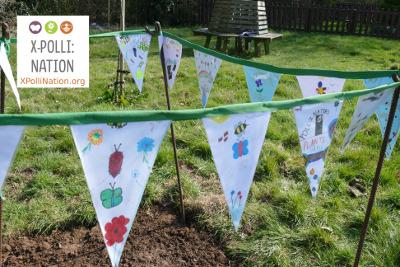Try out our new interactive tools to learn to distinguish UK bumblebee species using a key and in collaboration with artificial intelligence technologies such as automated image recognition and automatically generated feedback. These build on resources developed through BeeWatch, and we will be working towards integrating these into iSpot in some manner. Suggestions and Feedback welcome!
https://citsci.kmi.open.ac.uk/xpolli-bumblebee
For more context, here is the press release from the OU research news pages (http://www.open.ac.uk/research/news/new-technology-enhanced-learning-materials-pollinators-during-bees-needs-week) copied verbatim:
New technology-enhanced learning materials on pollinators during Bees Needs Week

As the COVID-19 pandemic puts the focus on literacy and numeracy in home-schooling, OU researchers have developed technologies to also help families learn about the natural environment.
The Human-Computer Collaborative Learning in Citizen Science project, which received £507,000 from the Engineering and Physical Research Council, led by Dr Advaith Siddharthan at the OU’s Knowledge Media Institute, has responded to the pandemic by creating a new collection of interactive learning materials on the Open University’s OpenLearn Create Platform.
The course, A Cross-pollinated resource for pollinator citizen science, is being launched today at the beginning of Bees’ Needs Week (July 13-19 2020), an annual event coordinated by the Department for Environment, Food and Rural Affairs, working alongside charities, businesses, conservation groups and academic institutions to raise awareness of bees and other pollinators.
“The Covid-19 crisis has had an adverse impact on science learning in UK schools. Schools are expected to focus on core topics of literacy and numeracy, and families continue to struggle with home-schooling. There is a desperate need for resources to encourage science learning in these times,” said Dr Siddharthan.
Innovative technologies and interactive interfaces
These courses, which are suitable for children aged seven and above and their parents and teachers, are designed around innovative research technologies developed through the project, which investigate how Artificial Intelligence (AI) technologies can work alongside human intelligence in monitoring our natural environment and how people and AI can help each other in science learning.
The materials make it possible to learn to identify and distinguish different species of bumblebee and butterfly using an interactive identification key, seeking suggestions from automated image recognition and receiving formative feedback through automatically generated texts. There are also interfaces to explore which flowers attract which pollinators, and advice on what to plant is delivered through a recommender system.
“We are developing novel technologies that mediate formal and non-formal science learning, indoor and outdoor learning, and home and school learning,” said Dr Siddharthan. “This OpenLearn Create collection is a fantastic and timely way for families and schools to explore these. We hope that learning about the diversity of pollinating insects can open a door to greater enjoyment of nature and spur societal action to protect it.“
The learning materials and the wider project are part of a collaboration in X-Polli:Nation citizen science between The Open University, University of Aberdeen, Imperial College London, Learning through Landscapes, St Alban’s CE Aided Primary School and Museo Di Storia Naturale Della Maremma.
